How to increase the yield of cucumbers in open ground using simple but very effective methods
The question of how to increase the yield of cucumbers in open ground worries all summer residents. The number of cucumbers obtained from the garden over the summer depends on the care of the vegetables. It is important not only to choose the right place for planting and prepare the seeds, but also to follow the rules of watering and fertilizing, caring for the soil and roots, and regularly harvesting. Read more about this in our article.
What determines the yield of cucumbers?
The amount of harvest directly depends on:
- varieties of cucumbers;
- soil;
- the presence of special trellises;
- plant care.
There is also a factor that gardeners cannot influence - seasonal weather fluctuations.
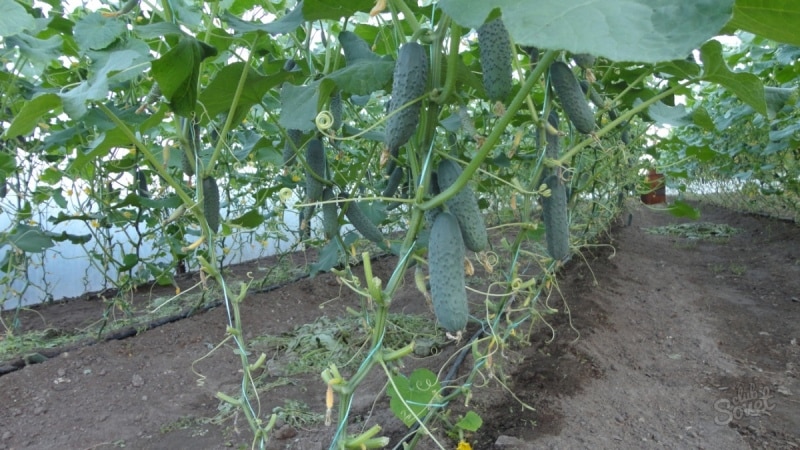
The best ways to increase productivity
The yield directly depends on the quality of the seed.
Proper seed preparation consists of several stages:
- Calibration. Cucumber seeds are dipped in a solution of a liter of water and a tablespoon of salt for 15-20 minutes. Floating, dark, damaged seeds are removed, the rest are washed with clean water and dried on a clean cloth. After this, small and large seeds are separated from each other. When planting, small seeds are buried by 1 cm, and large ones by 2 cm.
- Disinfection in a solution of potassium permanganate will protect seeds from bacteriosis, root rot, viral mosaic, powdery mildew and tracheomycosis wilt. Seeds in a fabric bag are dipped into the solution for 20 minutes, and then washed with running water.Instead of potassium permanganate, you can use a solution of a liter of water and a teaspoon of boric acid, Fitosporin-M or an infusion of garlic peels. The husk is poured with boiling water, left for 2 hours, filtered and the seeds are immersed in it for an hour, after which they are washed with water.
- Warming up in the oven. To increase germination, seeds are heated for 3 hours at a temperature of 50-55 °C. If there is time, the seeds are laid out near a heating device and gradually warmed up over the course of a month at a temperature of 25-29 °C.
- Bubbling. Oxygen enrichment is used for seeds 6-7 years old, which are immersed in a fabric bag in a warm solution of a growth stimulator for 18-24 hours. Using an aquarium compressor without a filter, a stream of air is supplied to the seeds. If there are a lot of seeds, after 9-12 hours the solution is changed to a new one. If there is no compressor, the warm solution (20-25 °C) is replaced every 2-3 hours and the seeds are regularly mixed with a wooden spoon.
- Germination up to 2 mm. Seeds are placed on a damp cloth on a plate and placed in a bright, warm place for a day; if necessary, sprinkled with water to maintain moisture.
- Hardening will increase the resistance of future plants. To do this, place the seedlings in a damp cloth bag on the bottom shelf of the refrigerator for 2 days. The bag is loosely wrapped in plastic to prevent it from drying out.
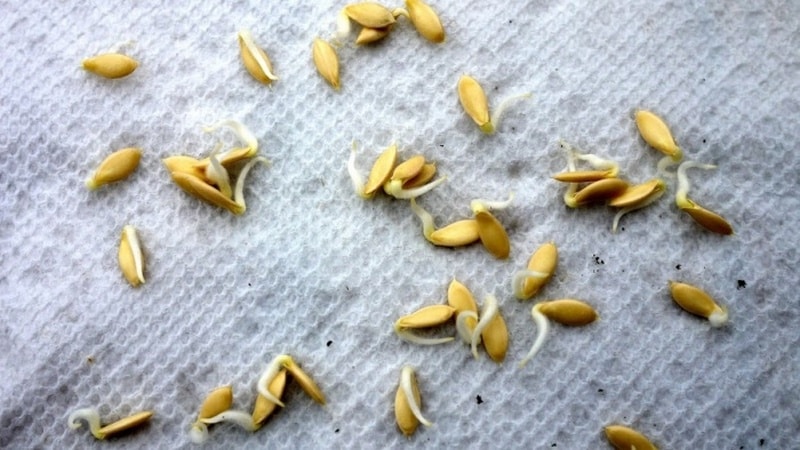
Successful predecessors and neighbors will help increase the harvest
Cucumbers are best planted on the ground where legumes grew. During the period of their growth, legumes saturate the soil with nitrogen macromolecules, which has a beneficial effect on the growth of cucumbers.
It is best to plant cucumbers next to green onions, dill, spinach or lettuce.. Before fruits begin to set on the vines, the herbs are removed.Corn, legumes, sunflowers, and sweet peppers go well with cucumbers.
Mulching beds
Covering the soil with special materials has the following advantages:
- prevents soil leaching and weathering;
- cucumber roots are protected from temperature changes;
- mulch prevents the rapid evaporation of moisture, you need to water less often;
- the earth remains porous, does not cake, and there is no need to loosen it;
- mulch prevents weed growth;
- cucumbers do not come into contact with the soil, remain clean and do not spoil.
Important! Organic mulch rots and increases soil fertility.
Types of mulch:
- manure with hay or straw (1:1) activates earthworms and saturates the soil with nitrogen;
- humus also saturates the soil with nitrogen and protects against temperature changes;
- compost quickly rots and warms the soil;
- caked and rotted sawdust in a layer of 2-5 cm repels slugs, for this, 3 buckets of sawdust are poured onto a film, mixed with 200 g of urea and 10 liters of water, the film is wrapped and left for two weeks for the sawdust to rot;
- neutral peat 5-7 cm thick disinfects, loosens and nourishes the soil;
- straw or dry grass insulates the soil and gets rid of slugs, but other pests and rodents can grow in it;
- non-woven material allows water and air to pass through, protects against weeds;
- cardboard retains moisture and protects against weeds;
- plastic film accelerates seed germination due to the greenhouse effect, but black film can lead to overheating of the soil, so it is better to use white film to prevent burns.
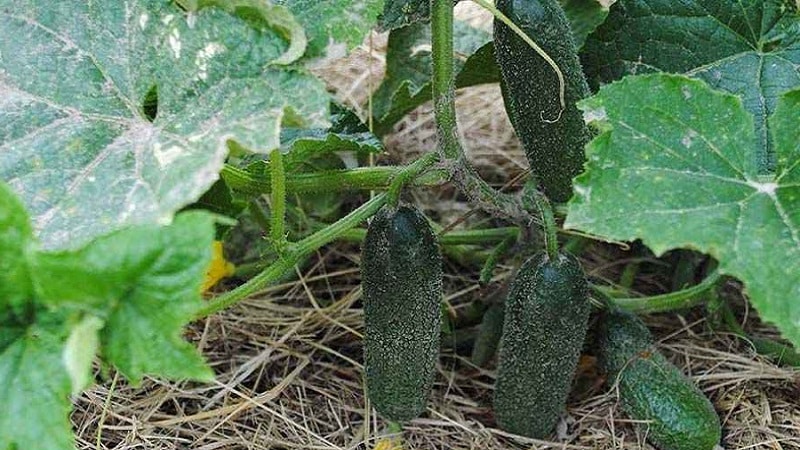
Before mulching do the following::
- Weeds and debris are removed, the soil is loosened, fertilized, the top layer is leveled, and watered if the soil is dry.
- The seedlings are planted in rows with a distance of 60 cm between them.
- The selected mulch is spread evenly around the plants.
Hilling cucumbers
To improve the yield of cucumbers, they are hilled. Moist soil is sprinkled onto the roots of the cucumbers when they already have 3-4 leaves. This helps the formation of the root system and retains moisture in the soil.
Artificial pollination
The method is used when there is an insufficient number of pollinating insects on the site. For manual pollination, a soft cosmetic brush is carefully carried out first inside the male inflorescences of cucumbers, then inside the female ones.
Inside the female flowers there is a sticky liquid on the pistil to which the pollen sticks.. As a result of pollination, a fruit is formed from the ovary of the pistil. To increase the yield, it is enough to treat 10% of the flowers on a warm sunny day. The air temperature should be 25-30 °C.
Watering with warm water
The temperature for watering cucumbers should be no lower than 23-25 ° C, in cold weather you can increase the water temperature to 50 ° C. Until the cucumbers bloom, they are watered once every 5-7 days with 3-4 liters of water per 1 sq.m. After flowering begins, water every 2-3 days with 6-12 liters of water per 1 sq.m. Water from a watering can strictly under the bush, without touching the leaves.
To form beneficial microflora in the soil, water the cucumbers with a solution of one glass of milk and 10 liters of warm water.
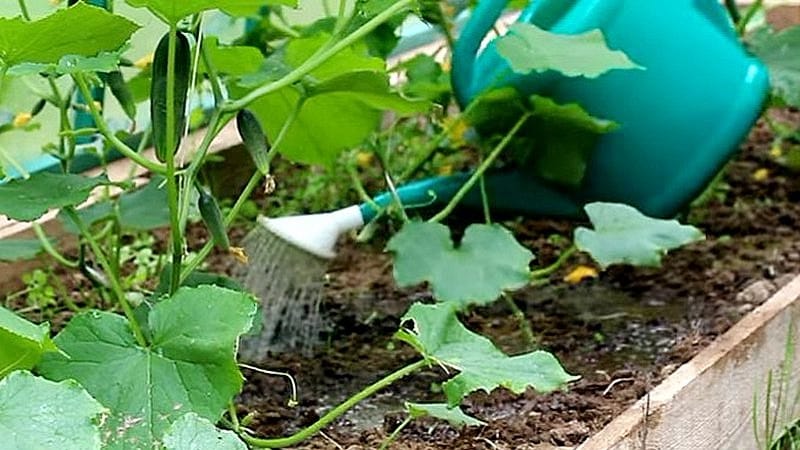
Strengthening the roots
A super way to increase yield is to add roots to a plant.. When 3 pairs of leaves appear on the lash, you need to cover the lash with soil up to the first leaf and water it with water. Plants will develop additional roots, which will extract more moisture and nutrients from the soil. Such plants produce 40% more yield.
Fertilizing
During the fruiting period, starting in July, cucumbers are fed once a week. If there are no mineral fertilizers, take 1 kg of mullein or 1 glass of wood ash and dilute it in 10 liters of warm water. The need for certain elements can be judged by the appearance of the fruit.
Narrowing of the fruit at the top and a change in color to light green indicates a lack of nitrogen. - then the soil is fed with peat or silt. They are dried in the sun for 2-3 days, then they are sprinkled on the soil around the stems with a layer of 1.5 cm.
Pinching and tying
Stepchildren are extra shoots, they take away the plant’s strength and reduce the fruiting rate. When pinching, carefully remove unnecessary side shoots measuring 4-6 cm in the axils of the first six leaves. This method increases productivity: the first cucumbers appear by mid-July.
To prevent the lashes from being damaged, they are tied up to 30 cm after growing. Tying saves space in the garden bed, simplifies plant care and harvesting, and prevents the occurrence of diseases.
Regular harvesting
During active fruiting, cucumbers are harvested every 2 days, otherwise they will outgrow and interfere with the formation of new cucumbers. Fruits measuring 8-18 cm are suitable for pickling and canning.
Important! Low-quality and damaged fruits are also regularly removed.
The harvest is harvested early in the morningThis way the vegetables stay fresh longer. When harvesting, the vines are not lifted or pulled; cucumbers are picked by pressing the stalk with your fingers.
Tips for increasing yield in open ground
The variety of cucumbers is important for a good harvest. Its choice is influenced by the planting region and soil conditions.
The best self-pollinating varieties for open ground:
- Balagan. Ripens in 40 days, the average length of the vegetable is 9 cm, up to 3.5 kg can be harvested from one bush.
- Berendey. Ripens in 40 days, the average length of the vegetable is 12-15 cm, one bush yields up to 3.5 kg.
- Gerda. The variety is particularly resistant to fungal diseases. Ripens 1.5 months after sowing. Up to 3 kg is collected from the bush.
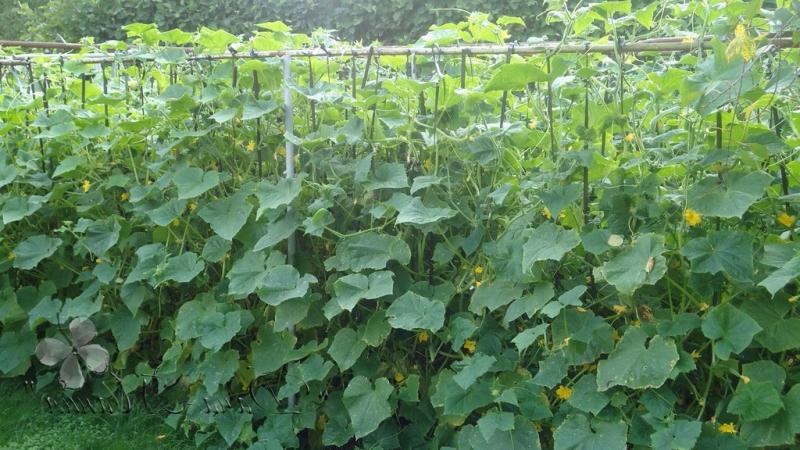
The best early ripening varieties:
- Hermann. When ripened 41 days after the appearance of sprouts, it has a long fruiting period. This variety is self-pollinating. The length of vegetables is 10 cm. From 1 sq. m you can collect up to 26 kg of cucumbers.
- Valdai. Ripens 45 days after sprouts appear, the length of the vegetables is 10 cm. Up to 4.5 kg of cucumbers can be harvested from a bush. Most flowers are female, so pollination by bees is necessary.
- Orlik bears fruit 50 days after sowing. The length of cucumbers is 14-16 cm, 6-8 kg are collected from a bush. The plant is immune to diseases such as powdery mildew, root rot, and olive spot.
It can be useful:
Cucumbers require particularly fertile soil. Normal soil acidity is 7 pH, soil analysis is done using an Alyamovsky device. Also, the acidity of the soil can be determined by the herbs growing in the area. Plantain, sedge, chickweed, horsetail, and heather grow in highly acidic soil.
To reduce it, liming is used. Fine slaked lime is added to the soil to a depth of 20 cm. This method improves it for several years to come. Lime can be replaced with dolomite flour, wood ash or chalk.
Bindweed, wheatgrass, coltsfoot on the site indicate to normal soil acidity, suitable for planting cucumbers.
For high yields, grow cucumbers on trellises.. On the trellis, the cucumbers are ventilated and illuminated, the fruiting period is extended, and the yield doubles.The row spacing should be from 60 to 100 cm.
The shape of the trellises can be rectangular, square, in the form of a tent, arch, or lattice. To make trellises, wood, branches, metal tubes, corners, wire mesh, natural and synthetic ropes are used.
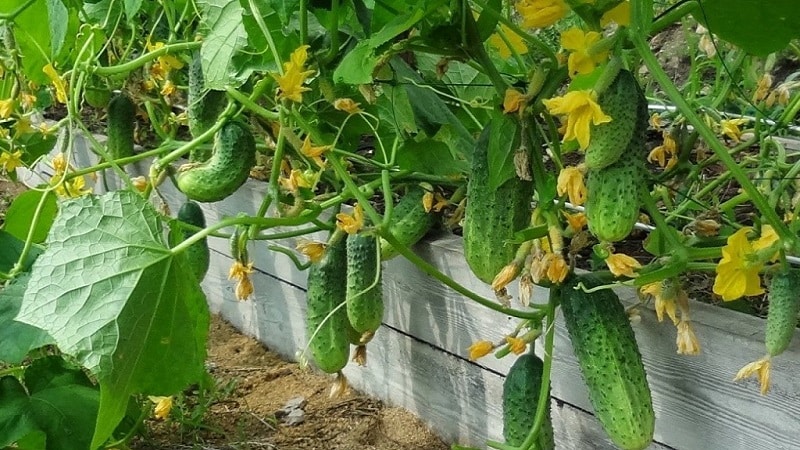
Cucumber doesn't like wind - place the bed in a windless place or take care to protect it from air currents.
To protect plants from diseases, observe watering rules, weed the beds on time. In case of disease, the beds are removed from the infected plants and sprayed with fungicidal preparations: “Bordeaux liquid”, “Hom”, “Fundazol”, “Topaz”, “Quadris”.
To control pests, use the drug "Terradox". It is applied to the soil surface and into the soil during planting. The drug is effective against most soil pests; upon contact with it they die. For melon aphids and whiteflies, plants are treated with Biotlin, Fitoverm 0.2% or Fitoverm 1%.
With spider mites The drug “Fitoverm M” fights. The biological product "Glyokladin" is placed in holes when planting seedlings. This protects the plants from root rot.
In the greenhouse
High humidity and temperature in the greenhouse contribute to the development of fungal diseases, so the soil is treated with fungicides, for example, Fitosporin.
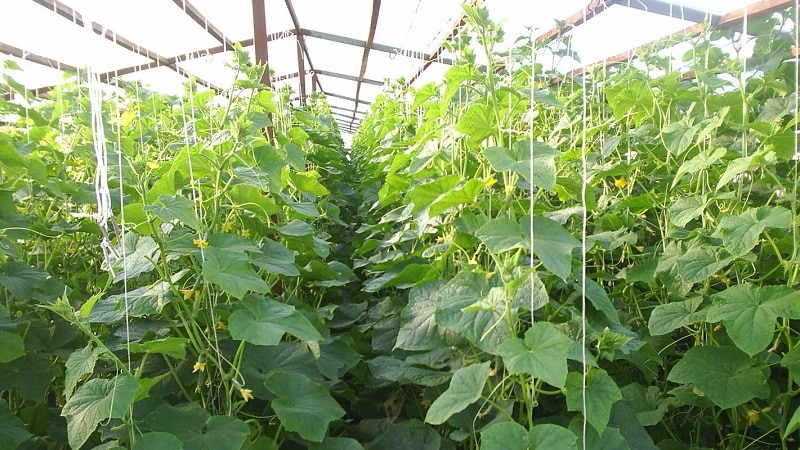
In the greenhouse it is recommended to completely replace the top layer of soil before boarding. If this cannot be done, the soil is disinfected with bleach, 2% formaldehyde solution or boiling water. For better lighting of plants, the direction of the greenhouse is made from north to south.
Varieties suitable for greenhouses Adam F1, Zyatek F1, Well-fed dad F1, Chinese cold-resistant F1. These are early ripening, high-yielding varieties with a long fruiting period.
Conclusion
The secret to a high yield of cucumbers lies in following simple rules for caring for plants and soil. This includes preparing seeds, planting cucumbers next to neutral crops, proper watering and timely fertilizing, installing trellises, strengthening roots and other activities.
Soil care includes preparing and enriching it before planting, mulching or hilling. Cucumber varieties are selected depending on the region of planting and growing conditions. Wishing you ripe and rich harvests!
It's a pity that sometimes the weather makes its own corrections